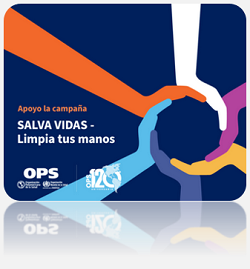Génoma Comparativo de Vibrio Cholerae en Haití, Asia y Africa
Reimer A R, Van Domselaar G, Stroika S, Walker M, Kent H et al. Comparative Genomics of Vibrio cholerae from Haiti, Asia, and Africa. Emerging Infectious Diseases. 2011; 17(11)
Investigación publicada por Emerging Infectious Diseases, revista arbitrada de acceso abierto, publicada mensualmente por el Centro para el Control y Prevención de Enfermedades CDC.
Cholera was absent from the island of Hispaniola at least a century before an outbreak that began in Haiti in the fall of 2010. Pulsed-field gel electrophoresis (PFGE) analysis of clinical isolates from the Haiti outbreak and recent global travelers returning to the United States showed indistinguishable PFGE fingerprints. To better explore the genetic ancestry of the Haiti outbreak strain, we acquired 23 whole-genome Vibrio cholera sequences: 9 isolates obtained in Haiti or the Dominican Republic, 12 PFGE pattern-matched isolates linked to Asia or Africa, and 2 nonmatched outliers from the Western Hemisphere. Phylogenies for whole-genome sequences and core genome single-nucleotide polymorphisms showed that the Haiti outbreak strain is genetically related to strains originating in India and Cameroon. However, because no identical genetic match was found among sequenced contemporary isolates, a definitive genetic origin for the outbreak in Haiti remains speculative.
The current (seventh) cholera pandemic was caused by serogroup O1 El Tor biotypes of Vibrio cholerae. This biotype first emerged on the Indonesian island of Sulawesi in 1961, then subsequently spread throughout Asia and Africa, where endemic and epidemic disease persists today (1,2). Seventh cholera pandemic biotypes were introduced into Peru in 1991 and subsequently spread across South and Central America, but these biotypes never reached the island of Hispaniola. Recent endemic and epidemic cases in Asia and Africa are increasingly attributed to genetically atypical El Tor variants that share characteristics of classical and El Tor strains (1,3,4).
After the 2010 earthquake in Haiti, an outbreak of cholera emerged that resulted in >385,000 infections and 5,800 deaths as of July 7, 2011 (5). The outbreak strain quickly spread to the neighboring Dominican Republic and globally as travelers returned home from affected regions (6,7). Concurrent cholera cases in the United States, linked by travel to cholera-endemic regions in Asia and Africa, were identified by national surveillance activities of PulseNet USA (Centers for Disease Control and Prevention
[CDC], Atlanta, GA, USA.)Serotyping, biotyping, and pulsed-field gel electrophoresis (PFGE) fingerprinting investigations suggested that the travel-associated cases could be genetically related to the Haiti outbreak strain (8). Because of the historical absence of cholera in Haiti before the 2010 earthquake, speculation abounds that the outbreak strain was imported into Haiti. Although clonality of the Haiti outbreak strain has been inferred by phenotypic characterization and …………cont
Disponible en: http://wwwnc.cdc.gov/eid/article/17/11/pdfs/11-0794.pdf



